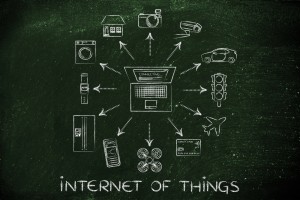 The term ‘Internet of Things’ (IoT) is becoming increasingly common, even starting to appear in consumer-focused publications. At the most basic level, the Internet of Things describes smart, Internet-connected devices that collect data ready for reporting.
The term ‘Internet of Things’ (IoT) is becoming increasingly common, even starting to appear in consumer-focused publications. At the most basic level, the Internet of Things describes smart, Internet-connected devices that collect data ready for reporting.
For every genuinely useful device incorporated into the Internet of Things, like the Apple Watch, there are dozens of dubious ones, like the WiFi-connected water filter or the Bluetooth toothbrush. Clearly these devices have no business application at all (nor are they supposed to), but as the high profile face of IoT, they have shifted attention from genuinely useful implementations.
IoT set to experience explosive growth
Big Data, another buzzword of recent years, is commonly thought of as a technique for better understanding customers, and tailoring products and services to their needs. However, Big Data insights can also be applied to internal operations to boost efficiency and profit margins.
Realising this, many larger organisations have begun collecting data from inside their processes and operations to spot inefficiencies or opportunities for improvement. IoT sensors help to automate the data collection process so that employees can remain fully focused on their core job responsibilities.
Industry analyst IDC predicts that the global IoT market will grow at nearly 17% year-on-year, reaching $1.7 trillion by 2020.
An example of IoT at work
Global professional services firm Deloitte operates what they believe to be the most advanced building in the world – The Edge in Amsterdam. The building is equipped with thousands of sensors integrated into the light fittings on every floor.
These sensors capture all manner of environmental data – temperature, humidity and even how many people are in any room at any given point in time. Reports are then delivered to a central console where certain decisions can be made automatically.
If the sensors detect that one of the toilets on the sixth floor has not been used much during the day, the cleaning crew is alerted (via mobile app) to skip it during their rounds. Cleaners no longer have to visit every room to top up paper towels ‘just in case’ because the sensors can tell them in advance whether a top up is necessary.
The sensors also act as beacons that can direct visitors and consultants to any point in the building, using the company’s app. This means that authorised visitors do not need an escort for instance, preventing workers from being diverted to less productive tasks.
That same app can also be used to adjust the light levels and temperatures at each employee’s workstation to their preference. By tailoring the environment to each worker’s needs, productivity increases subtly to deliver company wide benefits.
Could your business benefit from IoT?
Deloitte-style tech may be beyond the reach of most SMEs, but it does offer a useful demonstration of how the Internet of Things can be applied in a business context. At this point small business owners should be asking themselves what kind of additional information they would benefit from collecting, and how technology could be applied to streamline that process.
Leave a Reply